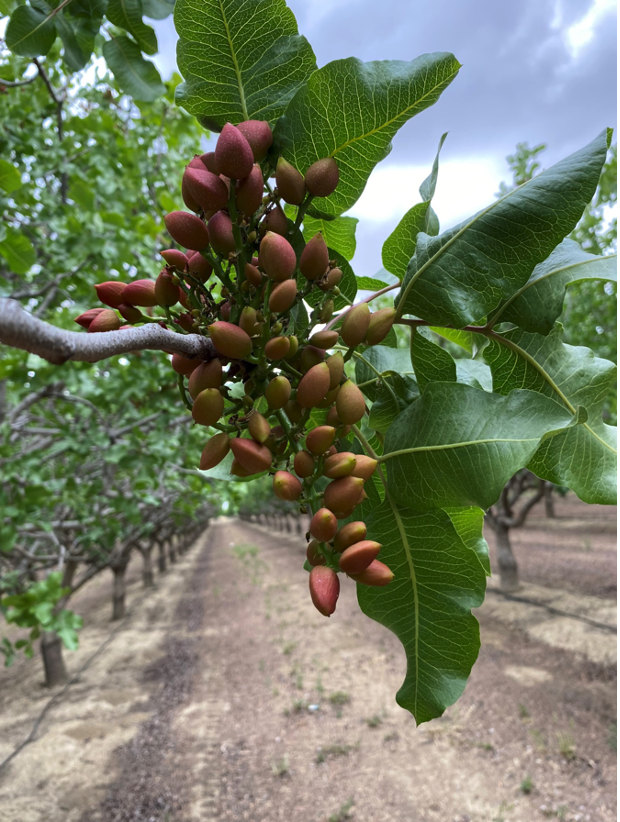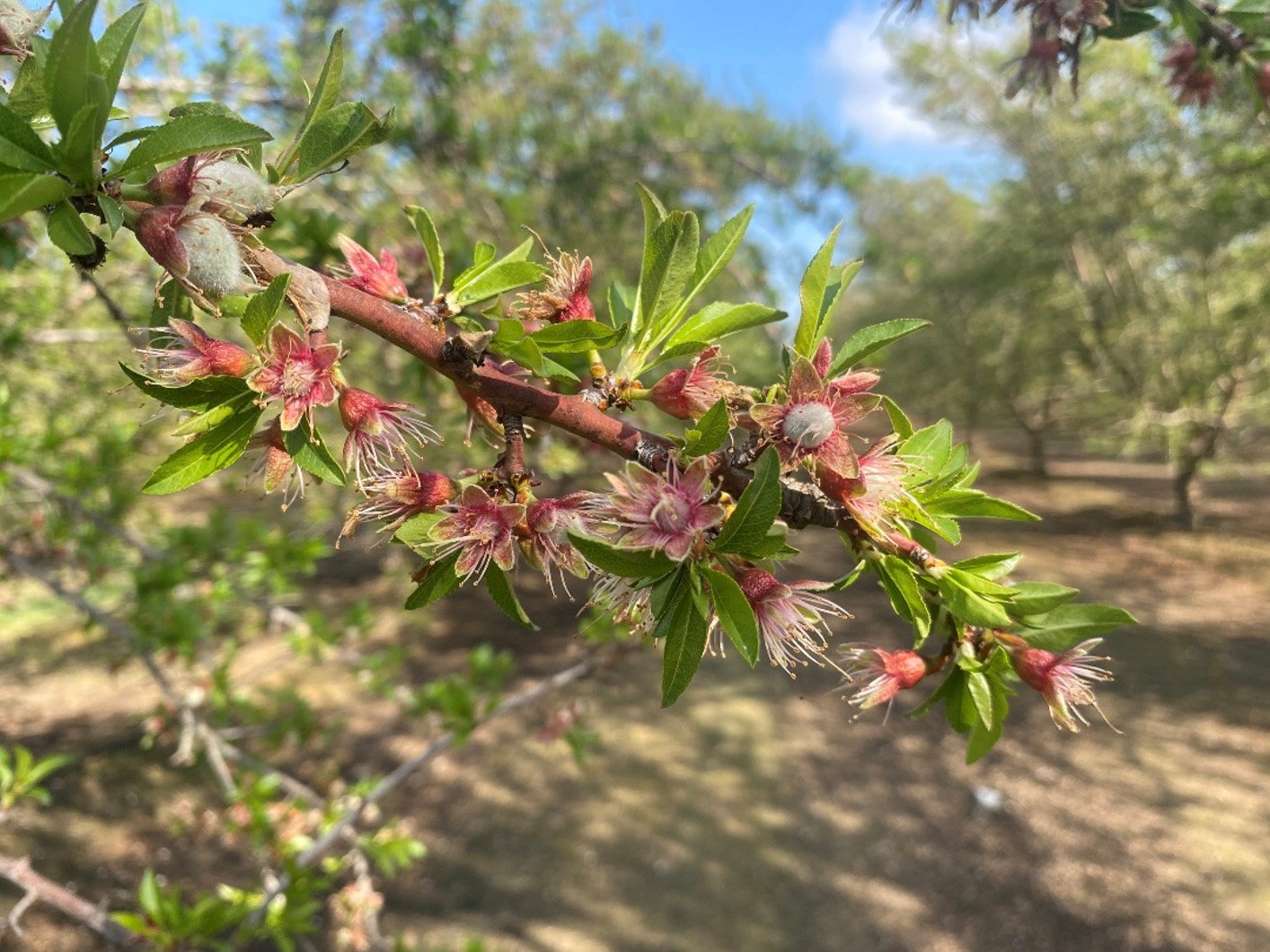Early Irrigation Stress and Its Correlation with Almond Production
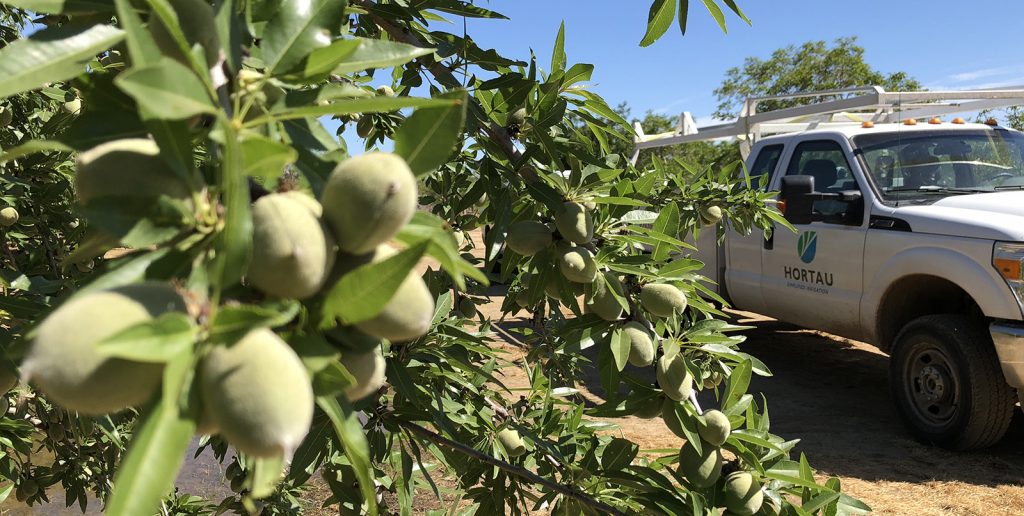

By Brian Hanson
Hortau Grower Support
With temperatures in the Valley already in the tripple digits hopefully, we’ve been paying close attention to our soil and irrigating regularly, building our profile and anticipating the inevitable increase in plant demand that comes with our scorching summer temperatures. Though we may wish for more precious time, unfortunately, in the valley, summer is here and almond production isn’t waiting around.
With nutrient/fertilizer applications happening and nut fill kicking into high gear, it is important to maintain ideal crop stress so almond trees can produce at optimum potential. It is essential that trees remain in the least stressed state (“Comfort Zone”) as possible, so we aren’t decreasing production by either keeping soil tension conditions too dry (stressed), or too wet (anaerobic/loss of nutrients). Having “eyes in the soil,” and an established “comfort zone” really helps take much of the guesswork out of knowing what state of stress, and condition of soil your crop is in.
Remembering this time in the season last year brings back memories of when I saw some significant differences in irrigation management, and the results were dramatic. Two different almond growers with similar irrigation designs, exact same soil type, and nearly same aged trees both had Hortau systems in their almonds. These growers were only about 2 miles apart, but each grower managed the crop significantly different throughout critical stages in the almond season. One grower (Mature Almonds 1) had issues with being able to get enough water out in time due to irrigation infrastructure but was also an advocate and believer in just meeting the crop’s historical Et demand. The other grower (Mature Almonds 2), did not manage irrigation perfectly, however, they used Hortau soil tension to evaluate, anticipate, and execute irrigations based off what he was seeing in real time.
Although we don’t know exact numbers on yield or quality, we do know the difference was significant and the pictures and graphs below speak for themselves. I evaluated each grower’s irrigation design and calculated how much water was actually applied per hour to each field. I then used Hortau’s pressure switch information to know exactly how many hours of irrigation both blocks received each month and determined how many acre inches were applied from May 1, 2017, to September 1, 2017. Historical Et is given as well. See irrigation info and graph summaries below to better understand significant differences:
Example of Grower #1


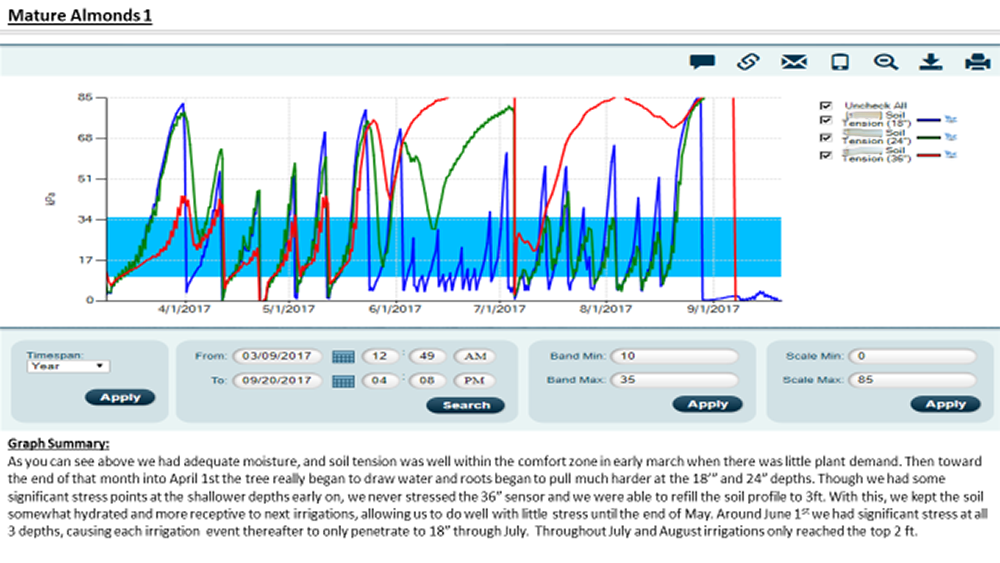

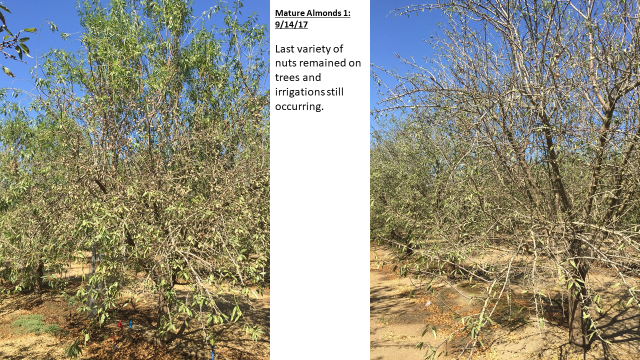

Example of Grower #2
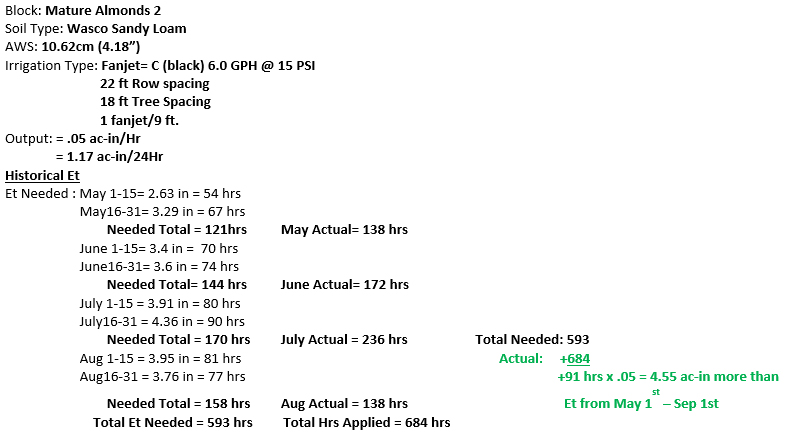

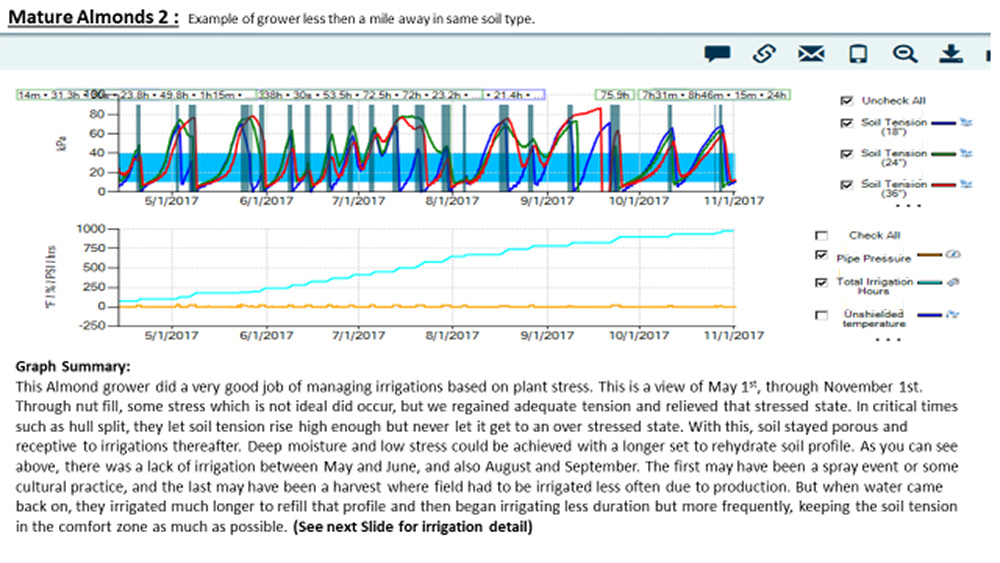

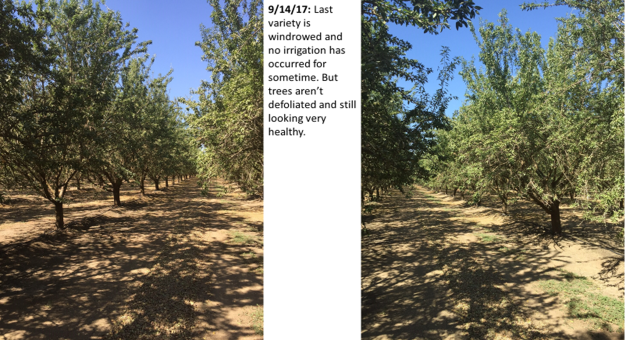

Mature Almonds #1 2017 Harvest Postseason Review:
- After a wet year, soil tension was adequate going into season.
- In late March, early April crop demand began to increase causing tension to also increase.
- By mid-May we were behind on water, and already in a catch-up state just to rehydrate the soil.
- By mid-June irrigations weren’t reaching the 18” sensor on almost all blocks.
Mature Almonds #1 2018 Goals:
- Early on in the season apply water to crop demand and ensure the soil profile is full.
- As demand increases, so should our irrigations. If stress occurs, we need to rehydrate soil completely to ensure water is available to the trees.
- Control soil tension to an allowable kpa through harvest so soil doesn’t become hydrophobic, and following irrigations can be received.
- Increase overall health and production on each block by managing irrigations closely throughout the year.
In order to help the grower understand where irrigation management fell off and where we can improve, I reviewed the previous season and set goals for the current season. Today, the grower is experiencing more success as they are better using Hortau and soil tension and already seeing better crop potential and health (despite stress accumulated from last season). As an almond grower, it’s ideal to have data at our disposal to identify what worked well and what didn’t. We can then use that historic data, and real-time data from the current season, to set goals and improve on what we did previously.
Hopefully, these examples bring to light the importance of precision irrigation management throughout the whole season, through harvest and how it correlates with tree health and production.
This time of year, every irrigation counts, so be sure to leverage the data at your disposal and ensure your orchard is at maximum production levels.
Best of luck the rest of the season!
ABOUT THE AUTHOR
Grower Support specialist Brian Hanson was born and raised in Bakersfield and currently resides in Shafter. He followed a passion for ag to Bakersfield College, and then CSU Chico, where he studied Animal Science. Throughout college, he worked with a PCA and completed an internship focused on hay and cattle production.
After college, he began working as a Field Technician for Hortau installing and maintaining equipment in the field throughout Kern County. As a Grower Support specialist, Brian is committed to ensuring that all aspects of the Hortau platform are supported and he is always available to resolve any needs.
Send us your questions
Have something you'd like us to discuss on The Hortau Blog? Email us at [email protected]

